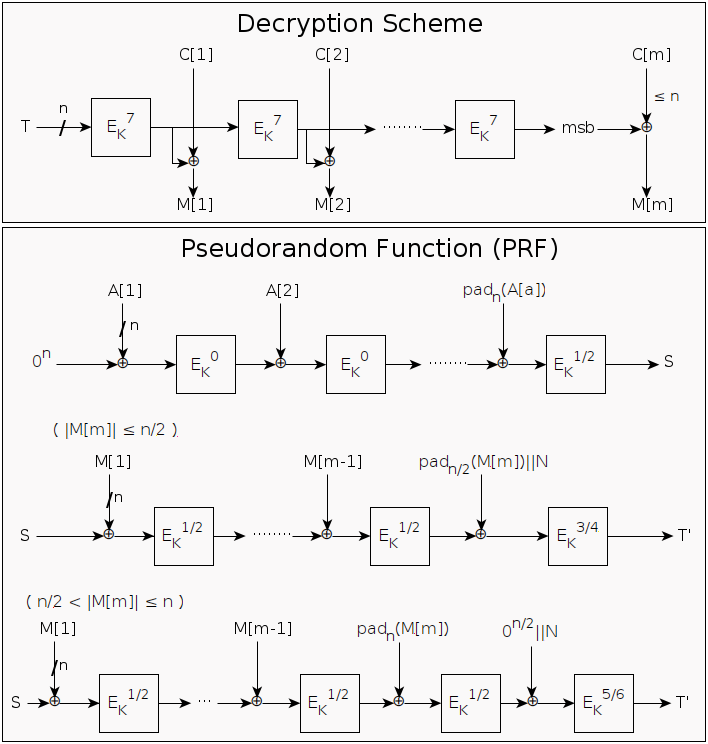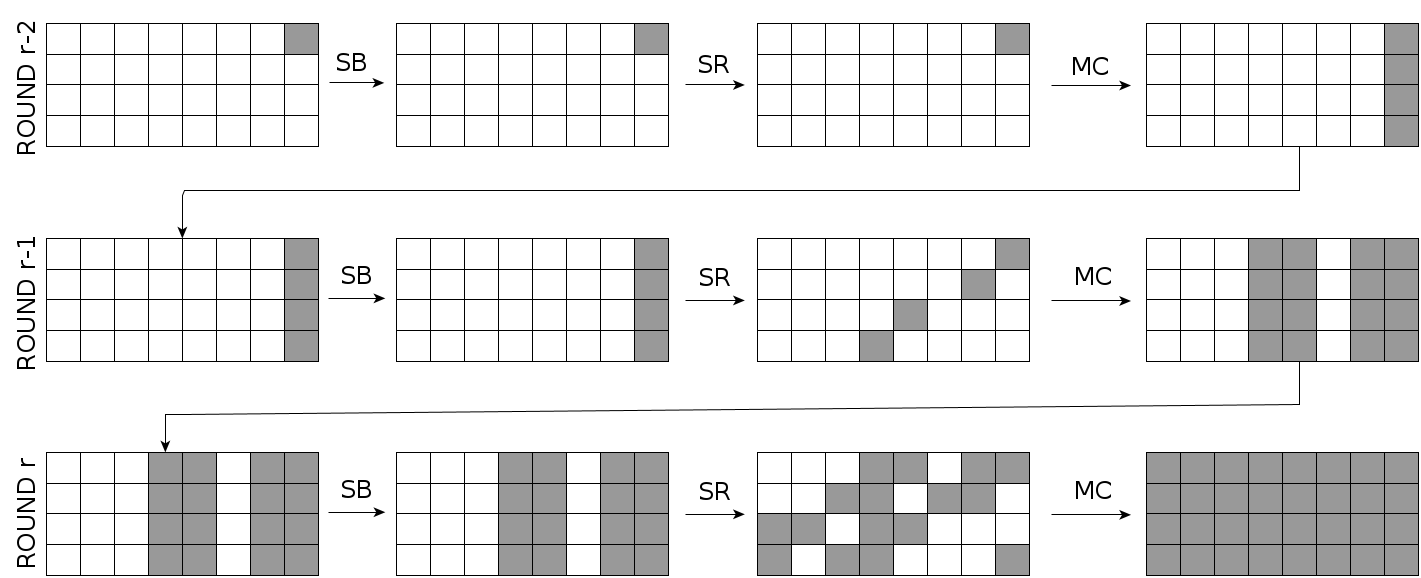DESIV- Differential Fault Analysis of SIV-Rijndael256 with a Single Fault
- Joint Work : Aikata, Banashri Karmakar, Dhiman Saha
- Accepted in HOST 2020
Here we mounted a Differential Fault Attack (DFA) on NIST LWC Round-1 candidate SIV-Rijndael256 AEAD and thus we completely recovered the master-key inducing only one fault in the internal state of the SIV-Rijndael256 AEAD. Moreover, we have used key-scheduling algorithm of Rijndael256 to make our DFA more stronger.
Contributions
- 3-round fault diffusion property of Rijndael256.
- Exploitation of Release of Unverified Plaintexts (RUP) and Nonce Misuse Resistance (NMR) property of SIV-Rijndael256 AEAD.
- Emphasis on the fact that the Rijndael256 like large state size is actually prone to the fault attack.
- Recovery of master-key of SIV-Rijndael256 AEAD using DFA with only one fault in the internal state.
- Use of key-scheduling algorithm of Rijndael256 in conjunction with the classical DFA for the key-recovery attack presented here.
Brief Description of SIV-Rijndael256 AEAD
- Block size (n) : 256 bits
- Key size (k) : 128 bits
- Tag size (|T|) : 256 bits
- Nonce length (|N|) : 128 bits
- Associated data length (|A|) : any bit length \(\geq 0\)
- Message length (|M|) : any bit length \(\geq 0\)
- Underlying block cipher (E) : Rijndael256 (parent of AES)
General Structure of SIV.Enc (Encryption Algorithm of SIV-Rijndael256 AEAD)

General Structure of SIV.Dec (Decryption Algorithm of SIV-Rijndael256 AEAD)

Brief Description of Rijndael256
- State size : 256 bits
- Master-key size : 128 bits
- Round-key size : 256 bits
- No. of rounds : 14
- Key-scheduling algorithm : Same like AES
Each round of modified Rijndael256 executes following steps (almost like AES):
- AddTweak (AT) : In this step a 3-bit tweak is XORed with each byte of the second column of the state.
- SubBytes (SB) : Same like the SubBytes operation of AES.
- ShiftRows (SR) : The shift offsets for rows 0, 1, 2, 3 are determined by the shift-offset vector \(\sigma\) = {0, 1, 3, 4}
- MixColumns (MC) : Same like the MixColumns operation of AES.
- AddRoundKey (ARK) : In this linear step, each byte of the state is exclusive-ORed with the corresponding byte of the round key.
Round structure of modified Rijndael256 is as follows:

3-round Fault Diffusion Property of Rijndael256
Diagonal: A diagonal is the set of four bytes of the state which maps to the same column under SR operation.
\[j^\text{th} (0 \le j \le 7) diagonal = D_j\]
3-round fault diffusion with a single-byte fault in the diagonal \(D_7\):
